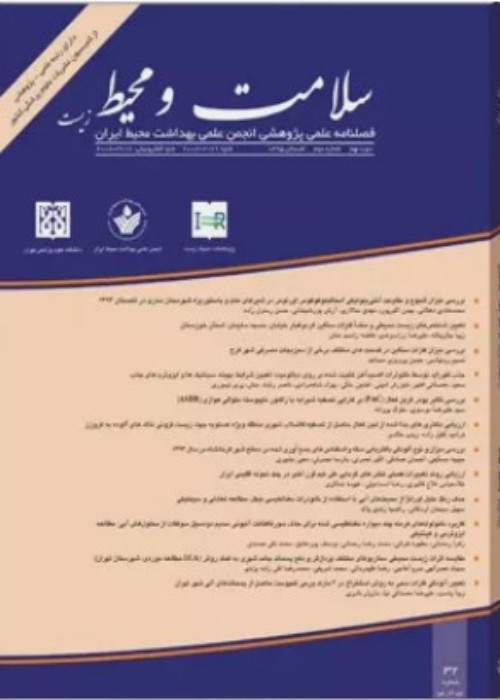Evaluation of the Isolated Bacteria from Activated Sludge of Asalouyeh Special Zone Municipal Wastewater Treatment for Bioaugmentation of Kerosene-Contaminated Soils
Author(s):
Abstract:
Background And Objectives
Bioaugmentation is a superior technique in bioremediation of contaminated soils with petroleum hydrocarbons. The aim of this study was to evaluate the effect of isolated bacteria from activated sludge of Asalouyeh special zone municipal wastewater treatment for bioaugmentation of kerosene-contaminated soils and to study the growth of isolated bacteria in the presence of different concentrations of this product.Materials And Methods
Sampling of activated sludge was carried out from two treatment plants in Asalouyeh zone. Isolation of degrading bacteria was performed by culturing the samples on basal mineral medium. Emulsification test and evaluating the kinetic growth of bacteria were carried out in different concentrations of kerosene. Isolated bacteria were inoculated to polluted soils with kerosene oil compound for bioaugmentation and measuring their bioremediation potentials and the rate of biodegradation were measured by InfraRed (IR) spectroscopy.Results
In this study, three bacterias: Pseudomonas putida, Serratia marcescens, and Proteus mirabilis were isolated and identified as kerosene degrading bacterias from activated sludge. P. putida was recognized as the most powerful degrading bacterium of this oil product according to the emulsification tests, measuring the growth of bacteria in various concentrations of kerosene, the results of bioaugmentation of contaminated column of soil with kerosene, and reducing the level of Total Petroleum Hydrocarbons (TPHs). This bacterium with emulsification rate of 3.8 could reduce 71.03% of TPHs within 30 days. Conclusion
According to the adaption of Pseudomonas putida, Serratia marcescens, and Proteus mirabilis in activated sludge with variety of pollutants in sewage, they can be used as non-indigenous bacteria for bioaugmentation and cleaning up the soil contaminated petroleum hydrocarbons.Keywords:
Language:
Persian
Published:
Iranian Journal of Health and Environment, Volume:9 Issue: 2, 2016
Pages:
211 to 222
magiran.com/p1590198
دانلود و مطالعه متن این مقاله با یکی از روشهای زیر امکان پذیر است:
اشتراک شخصی
با عضویت و پرداخت آنلاین حق اشتراک یکساله به مبلغ 1,390,000ريال میتوانید 70 عنوان مطلب دانلود کنید!
اشتراک سازمانی
به کتابخانه دانشگاه یا محل کار خود پیشنهاد کنید تا اشتراک سازمانی این پایگاه را برای دسترسی نامحدود همه کاربران به متن مطالب تهیه نمایند!
توجه!
- حق عضویت دریافتی صرف حمایت از نشریات عضو و نگهداری، تکمیل و توسعه مگیران میشود.
- پرداخت حق اشتراک و دانلود مقالات اجازه بازنشر آن در سایر رسانههای چاپی و دیجیتال را به کاربر نمیدهد.
In order to view content subscription is required
Personal subscription
Subscribe magiran.com for 70 € euros via PayPal and download 70 articles during a year.
Organization subscription
Please contact us to subscribe your university or library for unlimited access!


